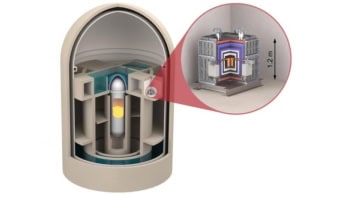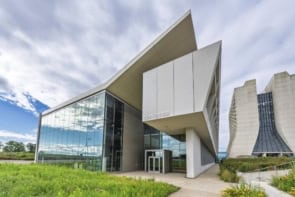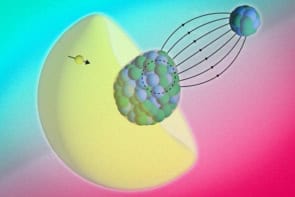
Physicists in the US and China have studied how a pulsed beam of electrons can be used to cool a beam of high-energy ions – a task that is normally done by a continuous beam of electrons. Researchers led by Max Bruker at the Thomas Jefferson National Accelerator Facility in the US, alongside a team at the Institute of Modern Physics (IMP) of the Chinese Academy of Sciences, modified a continuous-beam electron cooling system to operate in pulsed mode. Their results suggest that it should be possible to cool much higher energy ion beams using pulsed electron beams – which is good news for physicists designing the next generation of ion storage rings.
Storage-ring facilities that accelerate and store beams of protons and ions at low to medium energies use a technique called “electron cooling” to prevent their beams from degrading. This involves merging the ions with a beam of electrons, with both beams moving at roughly the same speed. Over time, the ions exchange momentum with the electrons until equilibrium is reached. This cools the ions down, preventing them from straying away from the centre of the beam.
Normally, this is done using this continuous electron beams with energies as high as 4.3 MeV. However, technological limitations on using static electric fields to accelerate electrons mean that creating continuous electron beams at higher energies is extremely difficult. This poses a challenge to the designers of future storage rings such as the US’s Electron Ion Collider, which will require electron beams as energetic as 50 MeV or more.
RF fields
To reach higher energies, electron beams are accelerated using radio-frequency (RF) fields, which results in a pulsed beam. Recently, the first pulsed electron cooling system has been installed at the Relativistic Heavy Ion Collider at Brookhaven National Laboratory in the US – operating at a modest electron energies of about 2 MeV.
Studies using computer simulations suggest that the cooling effects of pulsed and continuous electron beams are different – and therefore it is important that pulsed cooling be studied experimentally before it is implemented in higher-energy, next-generation facilities.

Gear-changing could allow colliders to smash particles with different velocities
Physicists at Jefferson Lab and IMP first teamed up in 2012 to study how pulsed electron beams could be used for cooling. Between 2016 and 2019, they performed four pulsed-beam cooling experiments at the CSRm storage ring at the IMP’s Heavy Ion Research Facility in Lanzhou. Instead of using an RF system to accelerate cooling electrons, they modified an existing continuous-beam system to deliver pulses of electrons. The researchers then measured how the profile of the cooled ion beam evolved over time, both in transverse and longitudinal directions.
Crucially, the teams’ experiments revealed that ions can be lost through transverse heating caused by uneven electron bunch lengths, highlighting the need for electron bunches with highly stable properties. Yet if bunch timings and lengths can be reliably maintained, the dynamics of the ion beams they interact with will not be adversely affected by their non-continuous nature. The results now pave the way for a new generation of ion ring facilities, capable of cooling ion beams at higher energies than were ever previously possible.
The research is described in Physical Review Accelerators and Beams.



